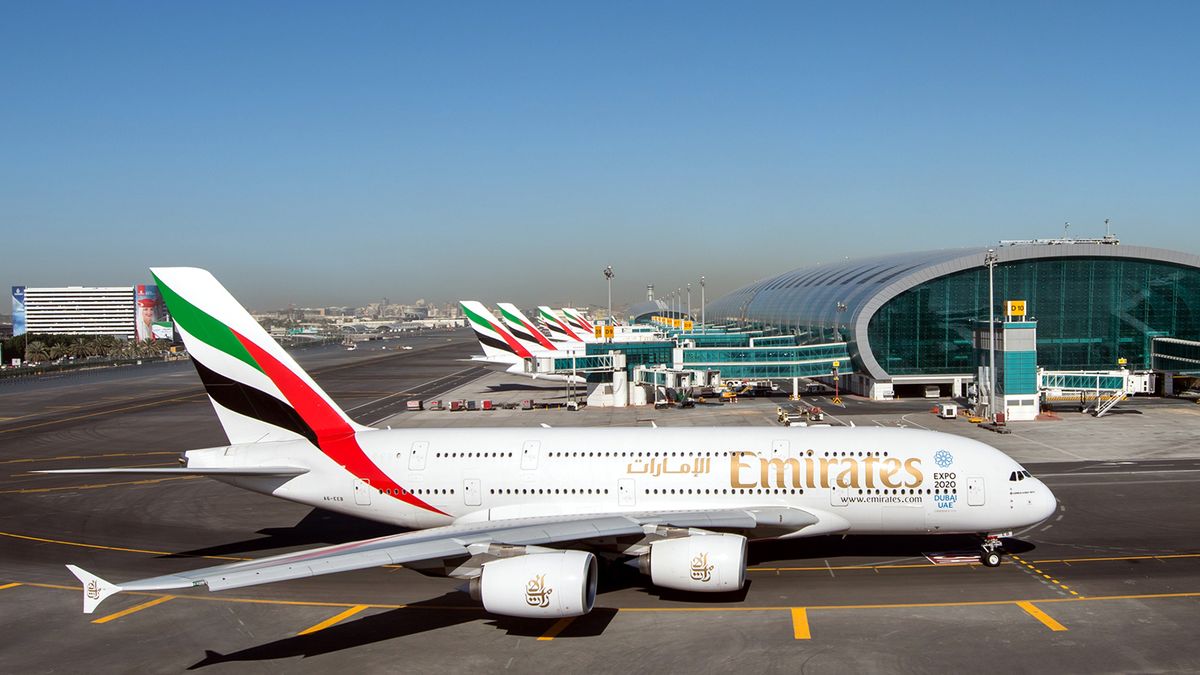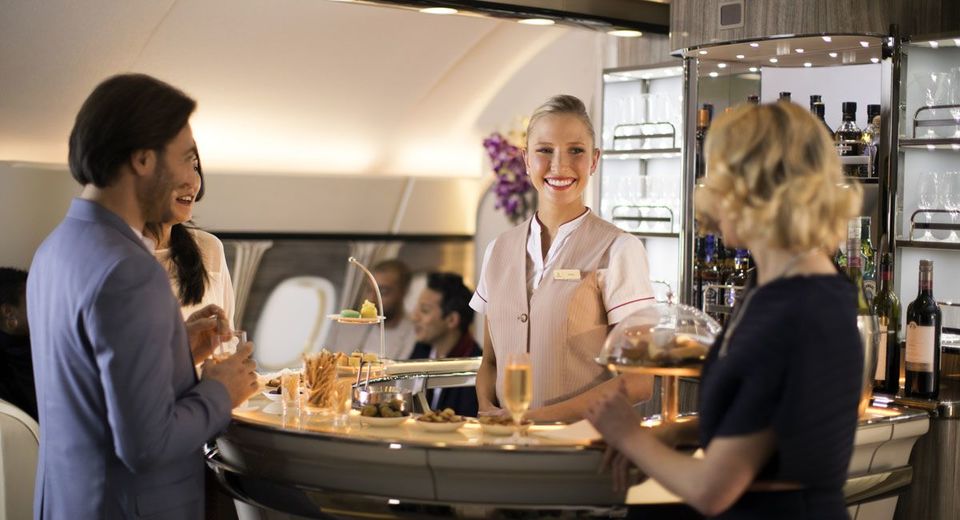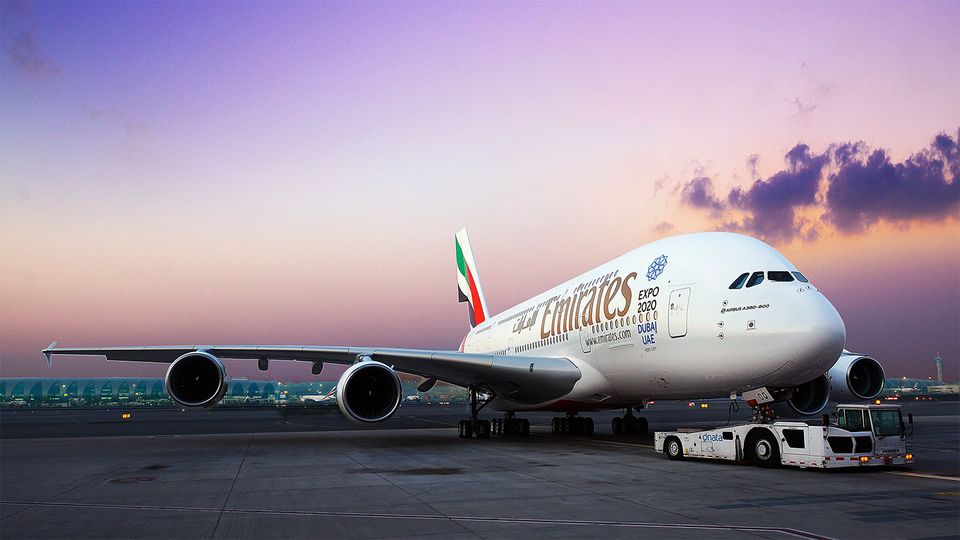Emirates: Build a new superjumbo, bigger than the A380
With its A380s now gracing the skies once again, the Gulf carrier’s boss is already dreaming up its replacement.

The A380 has experienced a huge return to favour in the last 12 months, with surging global demand seeing it reclaim its lofty title as the ‘queen of the skies’. But is it time for a superjumbo successor? Emirates President Sir Tim Clark thinks so.
“The math tells you that you need a big unit, much bigger than we're getting at the moment,” Clark explained to CNN Travel earlier this week, while also revealing his wishlist for what a possible new aircraft could entail.
Prior to the pandemic, travel was increasing by 4.5% each year. Once we return to those levels, it would take just 10 to 15 years to see global demand increase by half. And yet, with many A380s set to be phased out by the mid-2030s, there may not be an aircraft up to the job.
“Even with multiple 787s and A350s all busy flying around the world, I still don't get how you will pick up that growth curve,” Clark added. “Supply will be suppressed, demand will continue to grow, and when that happens prices rise, it's inevitable.”
Among the ideas Clark floated for a new aircraft were a lightweight composite fuselage and wings, together with radical ‘open fan’ engines, in line with the industry’s commitment to greater sustainability.
"If you can get them to do what I think they could do in terms of fuel efficiency and power, then you have the makings of an airplane that would match or beat the economics of the [twin-engine aircraft] that we see today, by quite a long way," he elaborated.
“Imagine a composite wing and a predominantly composite fuselage. Imagine engines that are giving you a 20 to 25% improvement compared to what you get today. So you get a lighter aircraft, far more fuel-efficient, which ticks all the boxes as far as the environmentalists are concerned.”
Currently, the largest planes in production are the Airbus A350-1000 and upcoming Boeing 777-9, which carry up to 410 and 426 respectively, depending on configuration.
However, based on Clark’s calculations, neither aircraft is large enough to truly replace the A380 or meet future demand for air travel. Both are significantly less than the A380’s typical 525.
While it’s doubtful a new superjumbo will come to fruition in the near future, not without some significant savings in fuel and weight, it’s a good case of never say never.
Sir Clark’s comments come just a day after Emirates announced an unprecedented US$2 billion investment in its fleet, including a retrofit of 120 aircraft with the latest cabin interiors and a new menu crowned by unlimited caviar and Dom Perignon in first class.
Emirates is the world’s largest operator of the innovative aircraft, of which 80 of its 123-strong stable have already returned to the skies. The remainder are primed for take off in 2023.
Six of the Dubai carrier’s A380s have been upgraded to feature the airline’s new premium economy cabin, including those currently flying to Sydney, London and Paris, with a further 70 to undergo a refresh later this year.
The A380 made its first flight in 2005 and immediately won over passengers with its audacious scale – its wingspan wider than a soccer pitch. Ultimately though, airlines were turned off by its high operating costs, with Qatar Airways CEO Akbar Al Baker famously describing it in 2021 as the airline’s “biggest mistake”.
Neither Airbus or Boeing have revealed plans to build another aircraft to rival it. Although, with travel demand unlikely to slow anytime soon, could it be time to go back to the drawing board?




05 May 2016
Total posts 616
Airbus or Boeing would need more customers than just Emirates to make it work.
As great as the A380 is, very high passenger loads are needed to make it work.
If they can build a superjumbo that can be profitable with lower percentage passenger loads than the A380 that would make a big difference.
29 Jan 2012
Total posts 184
Would be a step forward, but perhaps only when the greedy CEO's stop with their current money grab. Post-covid is all about 100 loading's, airfares 2 to 3 times pre-covid levels, and profits, profits, profits. I see the CEO's point but I also see the passengers desires. Passengers love comfort and space, CEO's love $ per square inch of real estate on their aircraft, so no empty seats, reduced number of slimline toilets and no to decent legroom is today the way.
Perhaps one day, but the big birds will not return quickly, but for now the cramped 787's and A350's will rule the skies and be successful for a few decades more! ? Have airlines thought about the issues with more aircraft in the skies and slots being available to land - international slots are full now, so good luck with any expansion plans.
06 Feb 2021
Total posts 59
One of the main reasons for the creation of the A380 in the first place was the shortage of landing slots at airports like Heathrow. Unfortunately it's a gas guzzler in terms of fuel used per seat compared to modern lighter twin engined aircraft like the A350 or 787. However, I sincerely doubt that EK, SQ, QF and others who are currently using them again are losing money on every flight, there is a point at which it is still financially to fly them, and given there is currently a shortfall in serviceable aircraft suitable for long haul flights, they are likely to be around for a while. Doing what QF did, write down their book value substantially taking a one time hit to the accounts makes things appear better on paper as well in subsequent years. Once Boeing finally start delivering some of the backlog of 787's, which sounds like it is imminent, and assuming the 777X is finally certified soon, and production commences, then the need for the A380 being back in service will dissipate over time.
However, having said that, the fact that EK are currently in the process of refitting theirs with PE is another pointer to how the A380 can be made more financially viable to use. PE is currently the most profitable section of the plane for the airlines in terms of revenue per floor space, and sadly, like it or not, if you are not happy sitting in economy these days for long haul, then you are going to have to pay a higher price for a larger seat with more space around you. There is currently, I understand, a world wide shortage of seats in business and PE, hence the astronomical prices charged if you wish to travel at relatively short notice. (It's not bad though Melb to Europe if you can book 3 to 4 months out.)
Whether the A380 could be redesigned to incorporate composite materials, and powered with new more more efficient engines is probably something Airbus have already looked at, or almost certainly will be. The future of aviation is yet to be revealed.
Qantas - Qantas Frequent Flyer
02 Jul 2011
Total posts 1374
Id think Emirates best bet might be trying to somehow re-engine the existing frames with a more efficient engine, maybe with new 11-abreast economy that Airbus had talked up as part of its Plus changes that never happened.
Given the losses Airbus has likely taken on the A380 program, can't see too many people stepping forward for an all new aircraft.
30 Nov 2016
Total posts 20
Has the A380 ever been known as the 'Queen of the skies'? I had heard it being referred to as the 'king', but the 'queen' moniker should be reserved for the one true queen - the 747.
Virgin Australia - Velocity Rewards
24 Jan 2018
Total posts 775
Snap !! Asked myself the same question, Fergo747.
22 Sep 2017
Total posts 96
Problem is the A380s create so much wake turbulence they slow down the takeoff rate and thereby reduce the number of slots available.
CX
05 Jun 2012
Total posts 127
It's my understanding that the A380's wings were designed to accommodate a stretch which, even in a multi-class configuration, could accommodate an additional 100+ passengers. In economy only (if they could increase the exit speeds - presumably would need more exits) 1,000.
That's probably part of the reason it died off, sadly - the wings were too big which affected efficiency in un-stretched mode.
Hi Guest, join in the discussion on Emirates: Build a new superjumbo, bigger than the A380